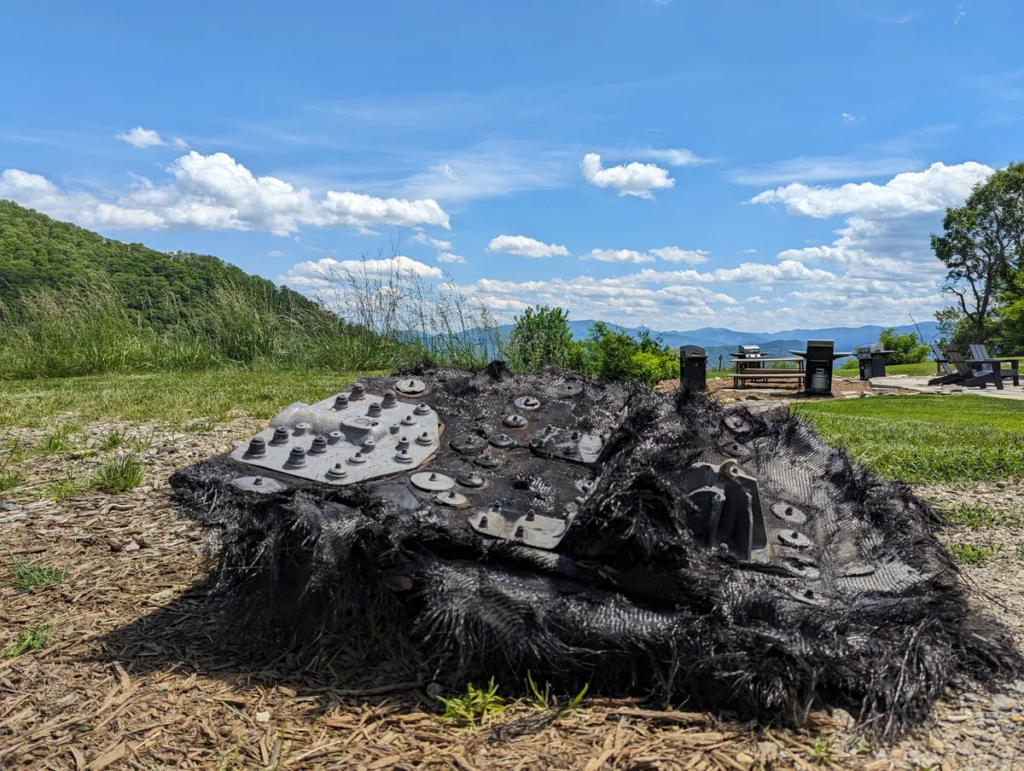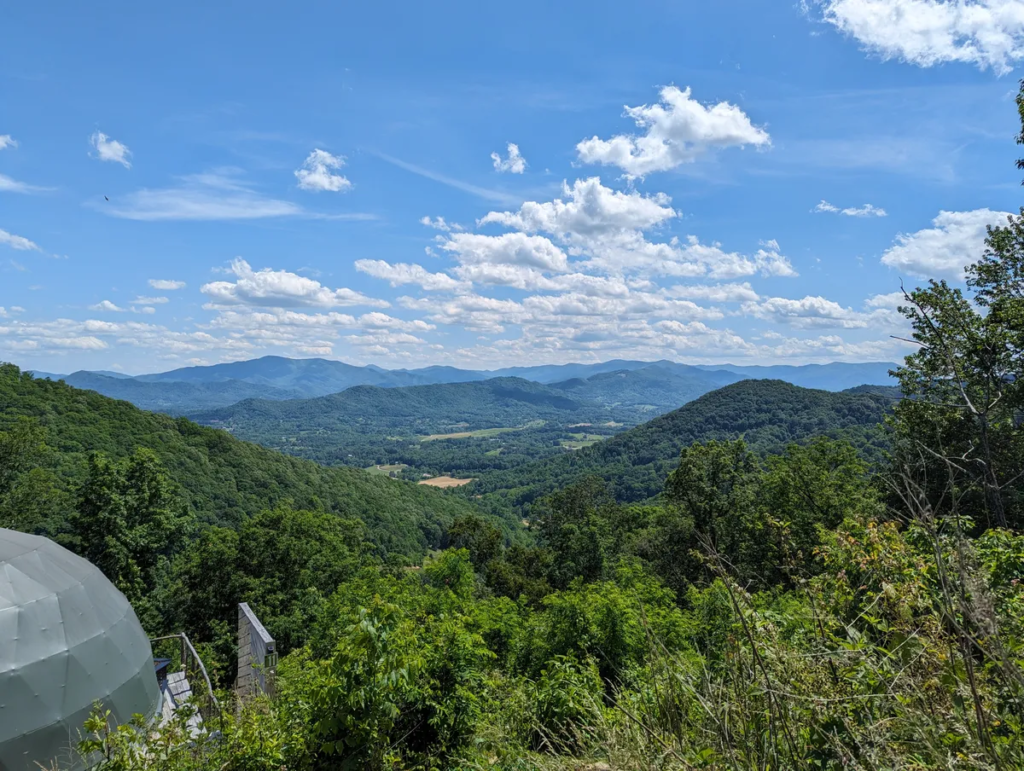In the serene landscapes of North Carolina’s verdant mountains, space exploration isn’t typically at the forefront of one’s thoughts. However, a surprising twist of fate unfolded when a sizable fragment of space debris was discovered near Canton, NC – an unexpected occurrence amidst the tranquility of Asheville’s vicinity.
.

The debris, suspected to originate from the re-entry of a portion of a SpaceX Dragon spacecraft following the conclusion of the Crew-7 astronaut mission to the International Space Station, was stumbled upon by ranger Justin Clontz and his father during routine trail maintenance at the picturesque Glamping Collective. This peculiar find, measuring roughly 3 feet by 3 feet, comprised shredded carbon fiber and charred metal components, emitting a faint ozone-like scent.
Initial speculation regarding the debris’s origins leaned towards a military aircraft mishap, prompting caution among the Glamping Collective staff. However, subsequent analysis by astrophysicist Jonathan McDowell pointed towards its association with the aforementioned SpaceX mission, corroborated by the trajectory of the spacecraft’s hardware re-entry, which directly intersected with the location of discovery.
Here is the reentry path indeed going just west of Asheville NC (direction of flight was to the NE) pic.twitter.com/5niV87xh51
— Jonathan McDowell (@planet4589) May 24, 2024
The uncovered debris piece, identified as part of the Dragon spacecraft’s trunk, underscores the resilience of spacefaring materials, capable of surviving re-entry largely intact. This revelation, coupled with similar instances of debris discoveries in Canada and Australia, underscores the durability of space cargo components during atmospheric re-entry.

Despite the intrigue surrounding such findings, the likelihood of encountering falling space debris remains exceedingly low, as affirmed by the Aerospace Corporation. Accordingly, the Glamping Collective intends to commemorate this extraordinary discovery by establishing a display along the trail, serving as a testament to the intersection of terrestrial tranquility and cosmic exploration.
